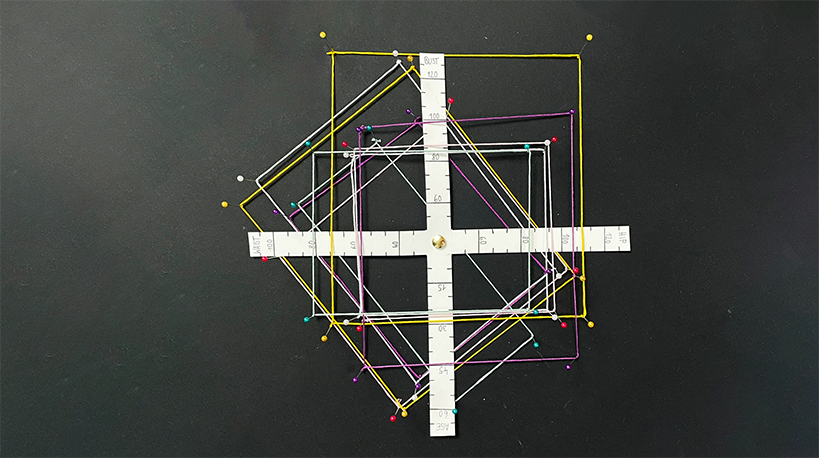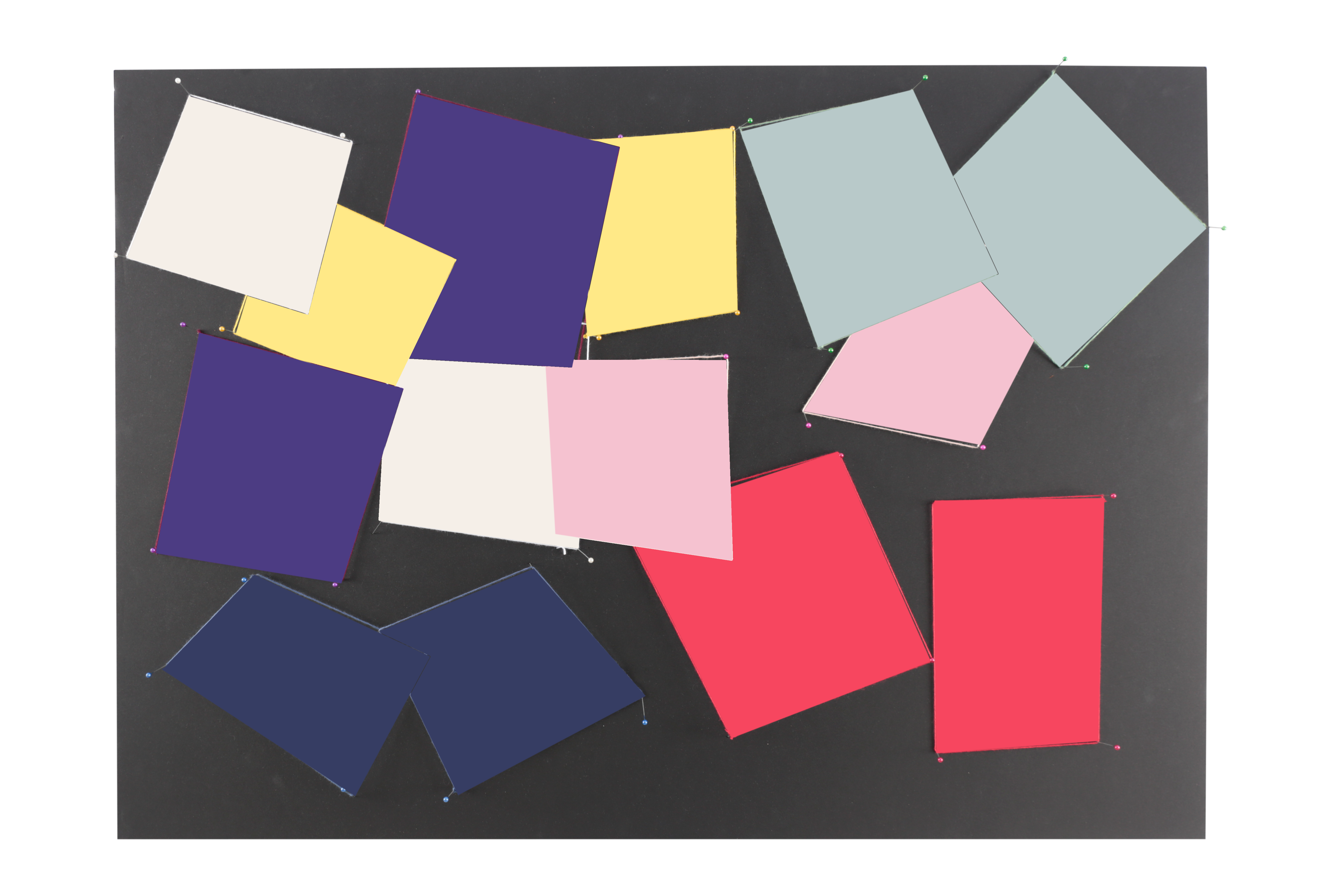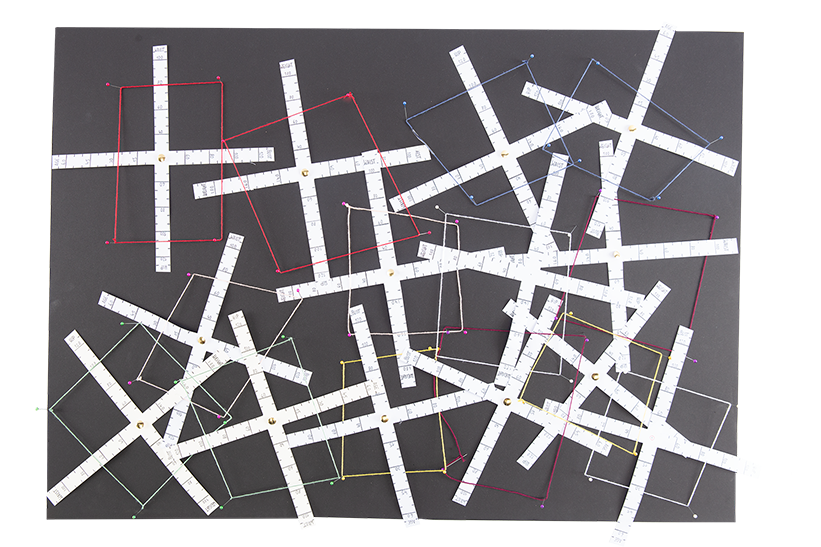How do we measure beauty?
As a fashion model, I always felt immense pressure to be the right size and be acutely aware of my body measurements. It was part of the job to control the circumference of my hip, waist, and my weight regularly, and to know these numbers by heart. This sentiment led me to investigate how beauty standards are measured through proportions and numbers.
By exploring alternative ways to measure and display female bodies, I aim to juxtapose rigid numerical standards with subjective narratives on beauty. Collecting and visualising data from my female peers, I constructed a new measuring system highlighting our unique proportions.
Finally, I decided to sew these proportions together, resulting in a tapestry symbolising our shared vulnerabilities yet empowerment. It urges us to rethink the way we measure our bodies and allow for softness with ourselves in times of so much tension and power.
By exploring alternative ways to measure and display female bodies, I aim to juxtapose rigid numerical standards with subjective narratives on beauty. Collecting and visualising data from my female peers, I constructed a new measuring system highlighting our unique proportions.
Finally, I decided to sew these proportions together, resulting in a tapestry symbolising our shared vulnerabilities yet empowerment. It urges us to rethink the way we measure our bodies and allow for softness with ourselves in times of so much tension and power.
Empowering Measurements:
Redefining beauty standards through visual storytelling
Redefining beauty standards through visual storytelling
How do we measure beauty ?
In the video, I explore how beauty has been measured throughout history via proportions and numbers, using systems such as the Golden Ratio and Vitruvian Man. The viewer is taken through more of my research and the process that led me to the design my final piece.
Our tapestry of proportions
My final piece - a quilt stretched within a wooden frame - was shaped from the colourful forms emerging from our workshop. It visualises the proportions of seven women sewn together with clearly visible threads. These white threads, which carry tension - metaphorically like female bodies - pull on the exact body proportions we had previously laid down. In this way, our forms were turned into a tapestry of a collective narrative.
Why did I choose sewing and the medium of quilting? Historically, quilting was used to convey messages, express points of view and pass on information to future generations. Quilting gave women a sense of fulfilment and a creative outlet that allowed them to contribute to their community in a meaningful and tangible way.
My inspiration to sew these shapes together was further influenced by a quote from artist Louise Bourgeois: ‘The act of sewing is a process of emotional repair’.
With my project, I wanted to challenge the preconception that you have to ‘fit in’ and emphasise that every body is a work of art and not just a medium.
Why did I choose sewing and the medium of quilting? Historically, quilting was used to convey messages, express points of view and pass on information to future generations. Quilting gave women a sense of fulfilment and a creative outlet that allowed them to contribute to their community in a meaningful and tangible way.
My inspiration to sew these shapes together was further influenced by a quote from artist Louise Bourgeois: ‘The act of sewing is a process of emotional repair’.
With my project, I wanted to challenge the preconception that you have to ‘fit in’ and emphasise that every body is a work of art and not just a medium.


A quilt of our proportions
To connect my ideas about proportions, I used a metaphor that would aid my explorations. I realised that the topic and my interest have been navigating within the realm of the fashion industry. Therefore, I decided to use methodologies commonly used in the fashion. From then on, weaving, sewing, and searching for common threads became my leitmotifs.
This metaphor also continued with the choice of materials —all the materials I utilised are common in the fashion industry: measurement bands, scissors, needles, pins, mood boards, styrofoam walls, labels, fabric, and so on.
Finding the common threads
For my research, I began investigating the role of proportions and ratios in determining beauty standards. I found that the hip-to-waist ratio is considered a measure of fertility and attractiveness of women in certain cultures. Similarly, the bust-to-waist ratio, as well as the height-to-weight and many more ratios are regarded as a mark of health and beauty.
As I delved deeper into the body proportions of beauty standards across different eras, I employed ChatGPT to estimate the measurements of common female beauty ideals. These included iconic figures such as the Venus of Willendorf (28 000 – 25 000 BCE), Botticelli's Venus (1484 – 1486 CE), Marilyn Monroe (1954), and Kim Kardashian (2024). It's crucial to note that the figures generated by ChatGPT were estimations and may not align precisely with actual measurements. For instance, in the case of the Venus of Willendorf, a statue measuring only 11.1 centimetres, I had to multiply the figures by a factor of 15 to include the ratios on the axis.




User-generated design workshop
On the 9th of March 2024, I conducted a workshop with seven women. Using the same materials and measurement systems I had developed in my previous experiments, I asked these women to determine their own body proportions now. For this workshop, it was important that we made ourselves quite vulnerable as we had to measure our waist, bust, and hip sizes. I also asked each of them to write down their weight, height and age. It was essential to allow the women to remain anonymous so they felt safe enough to share their figures.
Previously, I had asked some of my female peers to tell me their measurements directly without telling them they would remain anonymous, which often led to discomfort and justification: I discovered that most felt quite uncomfortable having their hips measured by me and, even worse, having to share these number with the public. It was a different element of discomfort for everyone, and everyone had their idea of the perfect measurements.
However by incorporating the proportions and conversations of my female peers through user-generated design, I aimed to empower them. My goal was to foster a closer connection and vulnerability among the participating women, allowing them to share their figures and engage in an open dialogue about beauty norms in a safe space.
Conclusion
The workshop evolved into a sociological experiment, sparking my curiosity about the high expectations we place on our bodies. It was designed to be a supportive and collaborative experience, with elements of playfulness and mutual acceptance of different body types. The women's feedback highlighted their enjoyment of working together and the sense of bonding they experienced.





